There are many views in Rome I can’t resist taking photos of almost every single time I see them, and lots of them are in or around the Parco Archeologico del Colosseo. They’re not always the same—light changes; seasons come and go—but they all share the elegant melancholy of a once invincible civilisation ultimately thwarted. Bell towers rise amid ruined temples; columns quarried in other continents and brought here in triumph languish in the dust. At every turn a vignette framed by umbrella pines and arches illustrates Shelley’s 1818 poem Ozymandias:
I met a traveller from an antique land
Who said: Two vast and trunkless legs of stone
Stand in the desert. Near them, on the sand,
Half sunk, a shattered visage lies, whose frown,
And wrinkled lip, and sneer of cold command,
Tell that its sculptor well those passions read
Which yet survive, stamped on these lifeless things,
The hand that mocked them and the heart that fed:
And on the pedestal these words appear:
"My name is Ozymandias, king of kings:
Look on my works, ye Mighty, and despair!"
Nothing beside remains. Round the decay
Of that colossal wreck, boundless and bare
The lone and level sands stretch far away.
Here it is, read in the inimitable and dulcet tones of Sir John Gielgud:
There’s the view which is lurking beneath the chaotic flurry of documents on the desktop of my computer which is from the Palatine looking towards the Caelian Hill.
The Claudian Aqueduct, pines, churches: what’s not to love? Above the aqueduct is the pitched roof of the sixth century church of Sts John and Paul, built incorporating a street of shops and apartments.
There’s the view from the Temple of Venus looking towards the Colosseum, in my opinion the best view there is of the Colosseum.
And the view from the terrace of the Horti Farnesiani (atop the very recently opened Domus Tiberiana, more of which anon), looking over the Forum which was once the busiest place in the world.
The view I find especially appealing at the moment is that from the upper level of the Colosseum (accessible with all ticket options) looking out over the Arch of Constantine towards the Palatine Hill.
As with the views above, it encompasses much of Rome’s history in a glimpse. The bucolic greenery of the hill speaks of the legendary foundation of the city by Romulus, son of Mars, on 21 April 753 BCE. That is, I think we can agree, a splendidly specific date for a legend. The arch of the Flavian Amphitheatre which frames the view recalls the rise to the pinnacle of imperial power more than eight centuries after the legend of Romulus. As the saying goes, Rome was very much not built in a day. Two hundred and thirty-five years after the completion of the amphitheatre, the Arch of Constantine was dedicated and imperial Rome was very much over the hill.
The arch is a battery of alarm bells heralding the impending collapse of empire: it commemorates a triumph fought between Romans—Constantine’s triumph was over his co-ruler, Maxentius; the monument is a cut and paste of the glory years of empire, employing statues and reliefs from monuments to Trajan, Hadrian, and Marcus Aurelius. It was dedicated two years after Constantine decriminalised Christianity, thus giving an institutional weight to a monotheistic and proselytising religion which undermined the origins so central to the city’s raison d’être. After all if people didn’t worship Mars where did that leave the Rome’s divine mandate to rule the “Empire without end” foretold by the Jupiter of Virgil’s imaginings?
In fact Constantine—born in what is now Serbia, educated in Asia Minor, and proclaimed successor to his father by Constantius Chlorus’ troops at York—cared for the Empire but had little interest in the city of Rome. His arch was dedicated by senators keen to remind him of his capital, a city in which in the thirty years of his reign he spent perhaps a total of eight months.
Indeed when the arch was dedicated in 315 Constantine was already plotting a new capital, geographically more suitable to govern the wealthy provinces of the Eastern Mediterranean as the fragmentation of empire became ever more apparent. The creation of Constantinople as the new capital would be a nail in the coffin of Rome: the Caput Mundi had lost its teeth. Not seven decades after Constantine’s edict of religious freedom had decriminalised Christianity, Theodosius would decree it the only religion of state, and one and a half centuries after the dedication of the Arch of Constantine there wasn’t an emperor in Rome. From the ashes of the empire rose the phoenix of the Church. Constantine’s arch survives in such splendid condition precisely because it was associated with the man considered to have been the first Christian emperor: it wasn’t stripped for spare parts. (The fence around it is very recent and protects against modern vandals, rather than the Vandals).
As we look out today from the Flavian Amphitheatre and raise our eyes above the Arch of Constantine to the hill where Romulus founded Rome, a thousand (or so) years before Constantine eschewed the city ordained by the gods, we see olive trees and the monastery of San Bonaventura al Palatino. There are still a handful of monks there, and most days their washing can be seen flapping in the breeze. The upstart Eastern religious cult ultimately triumphed, and every time I look out I imagine the emperors spinning in their graves; Ozymandius writ large.


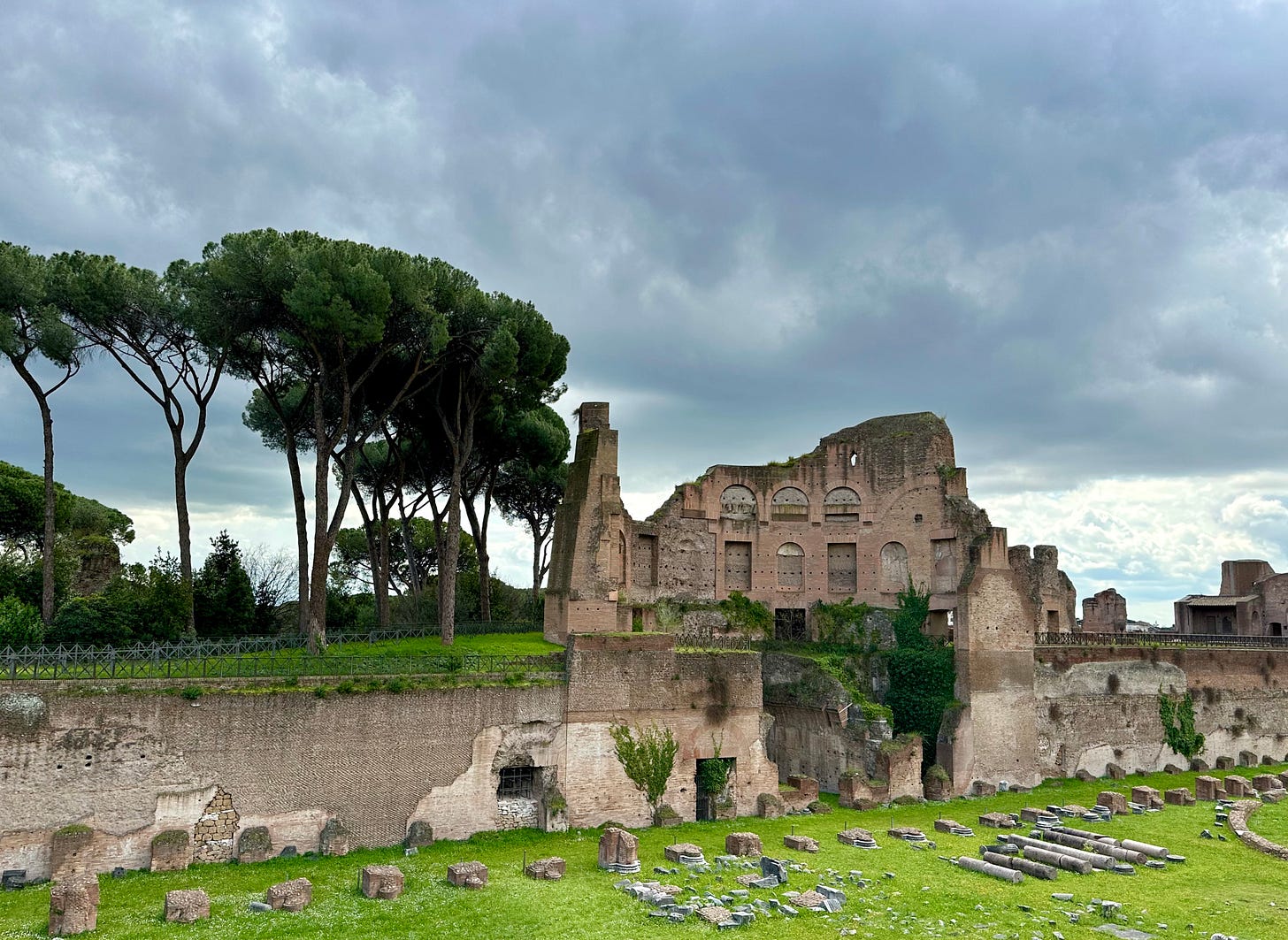
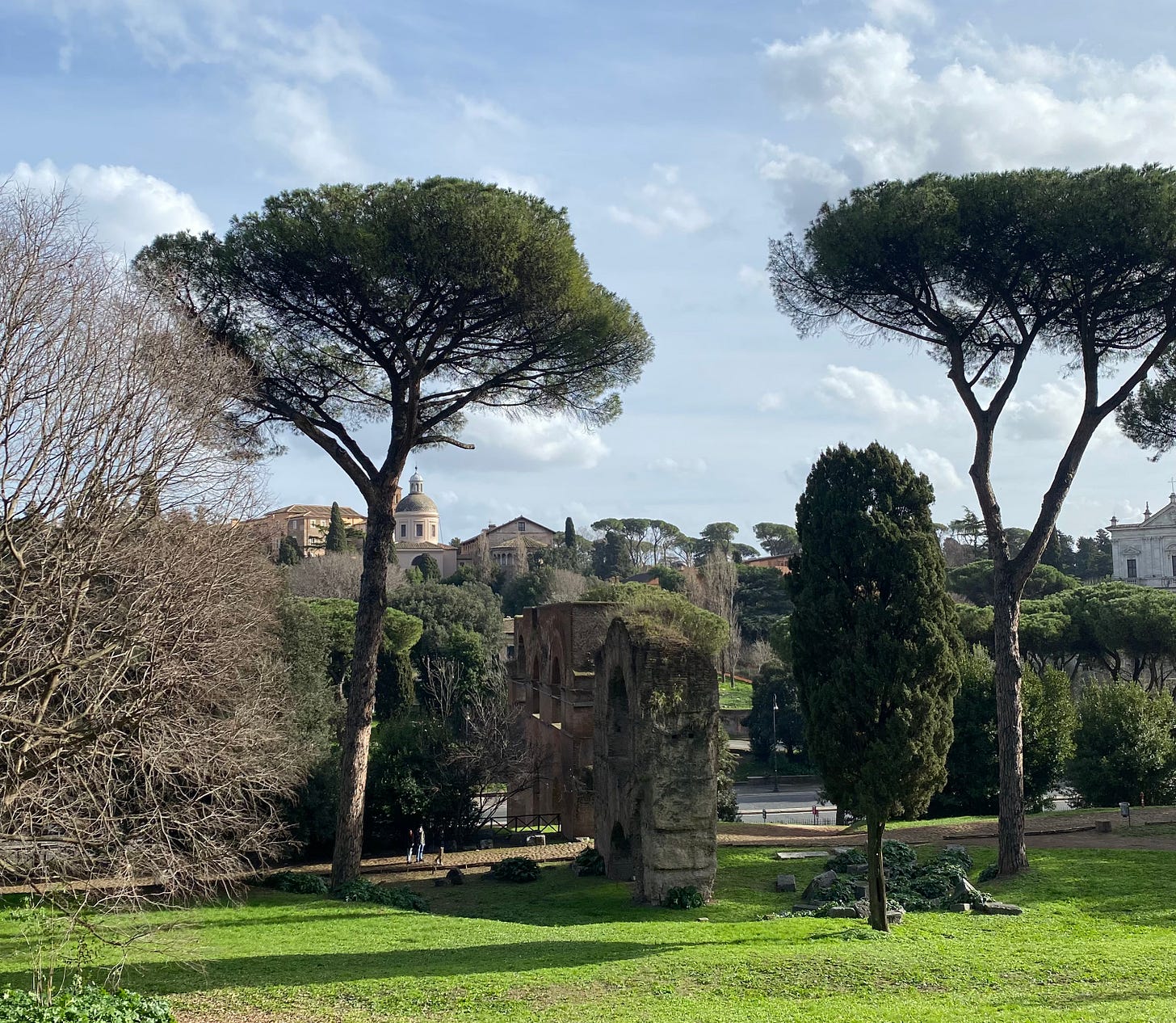
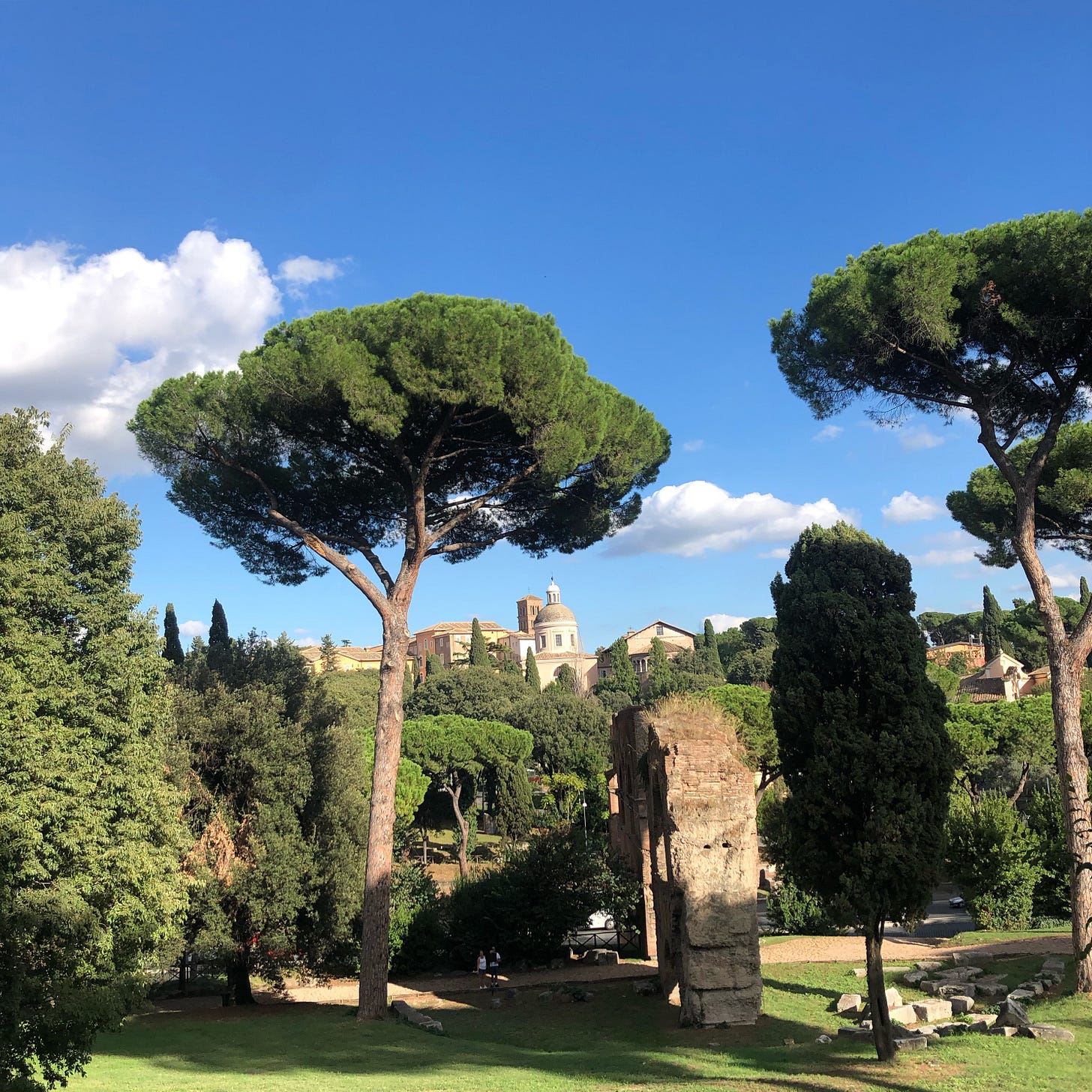


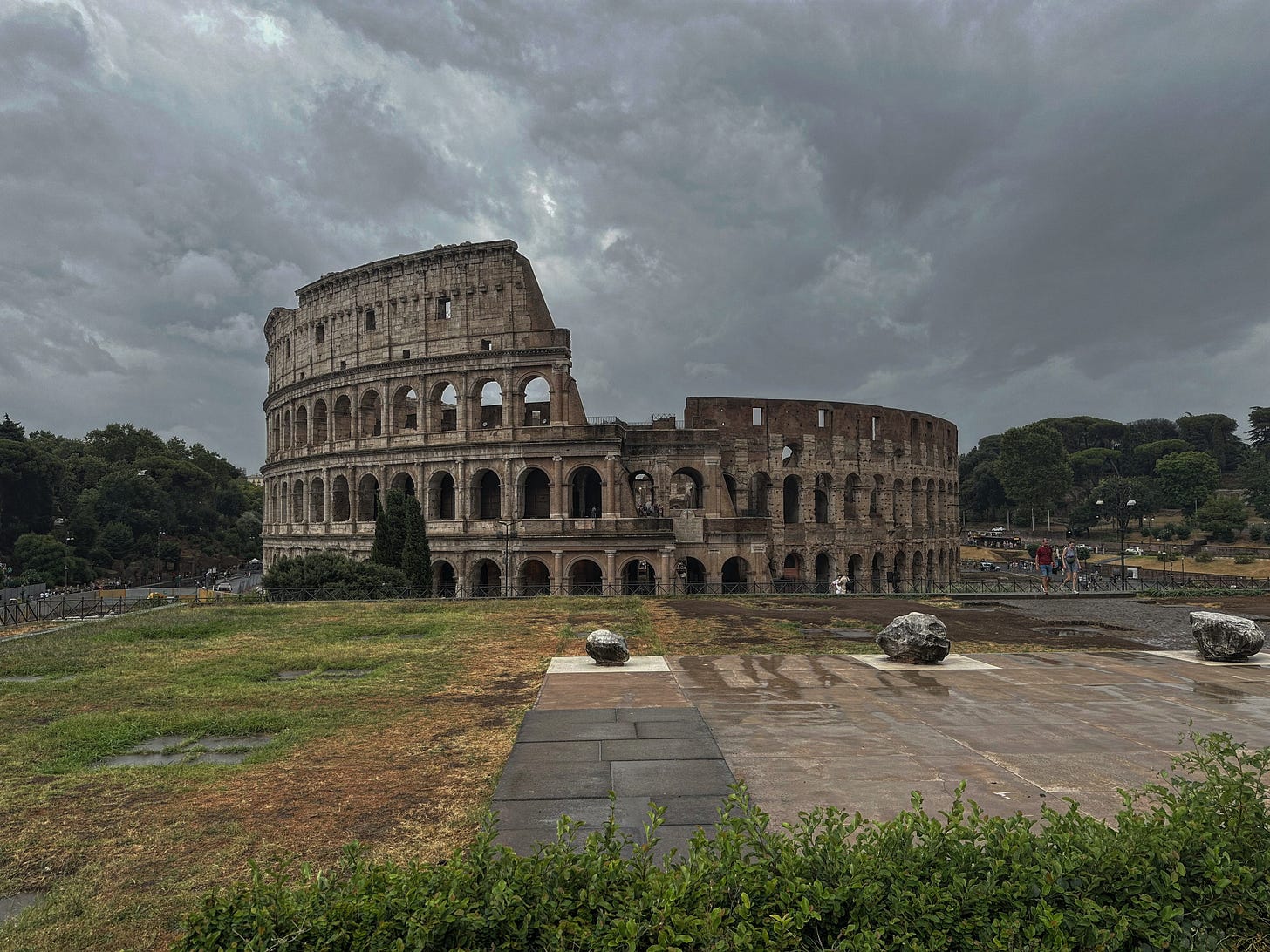
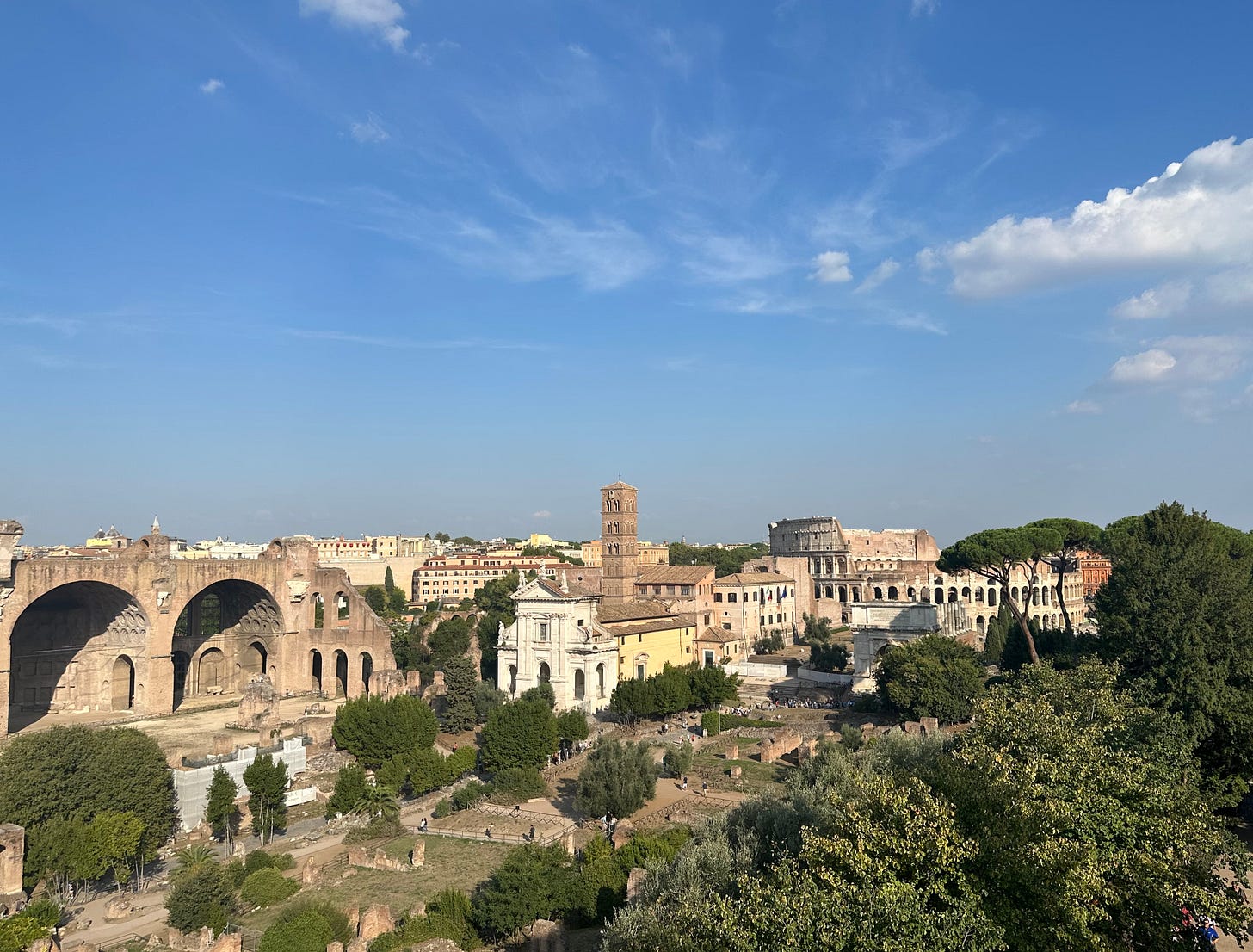
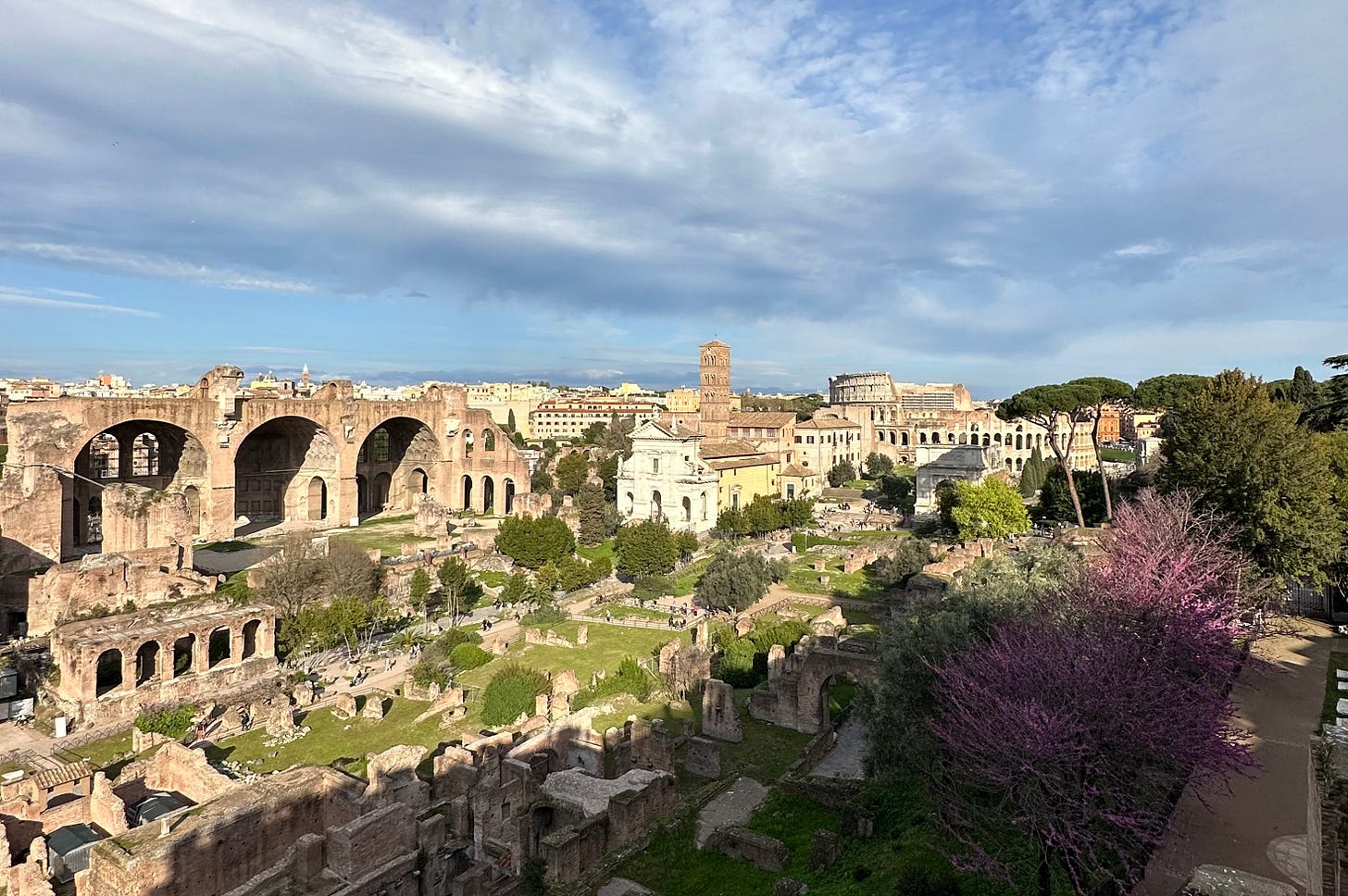
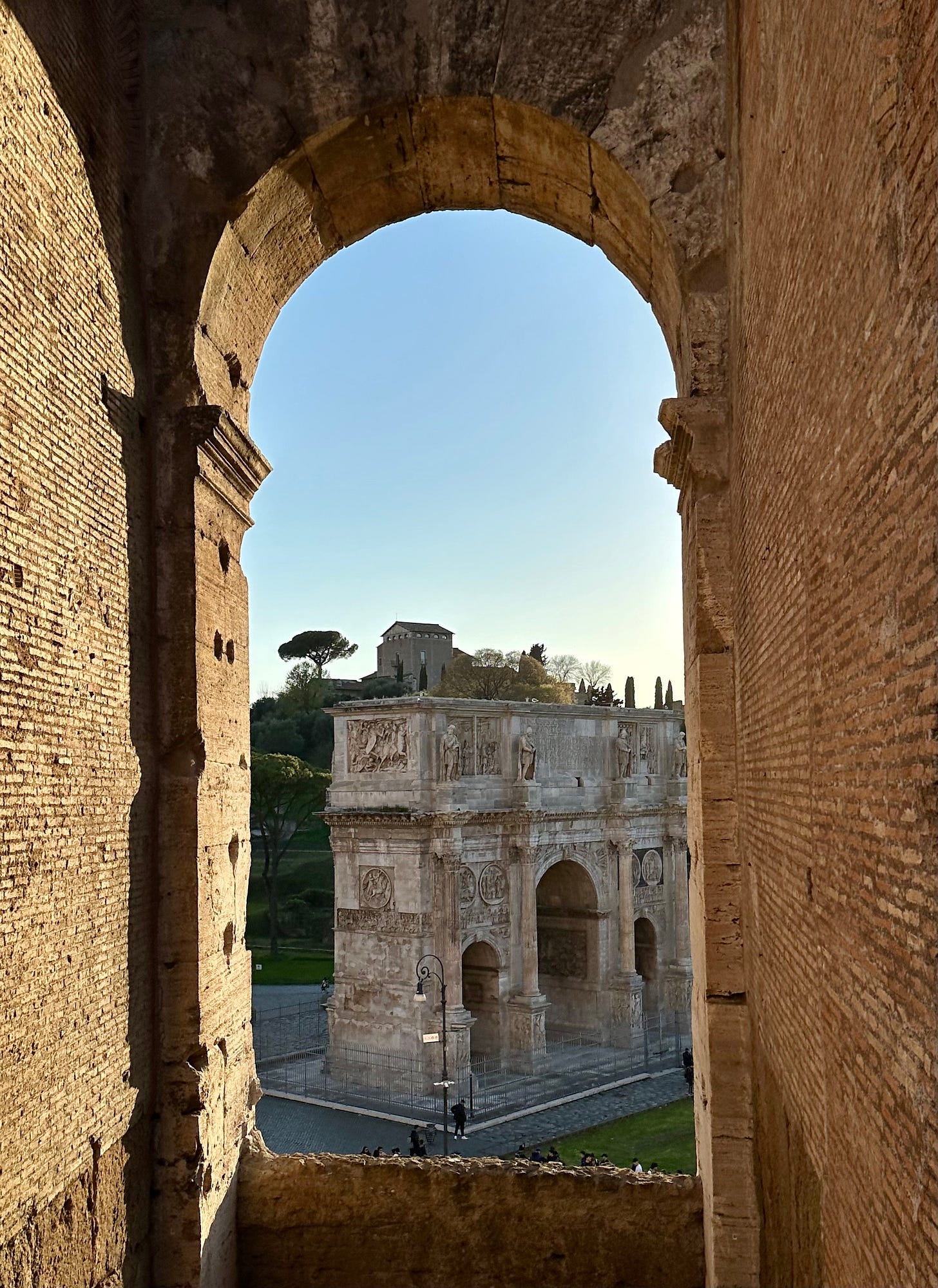
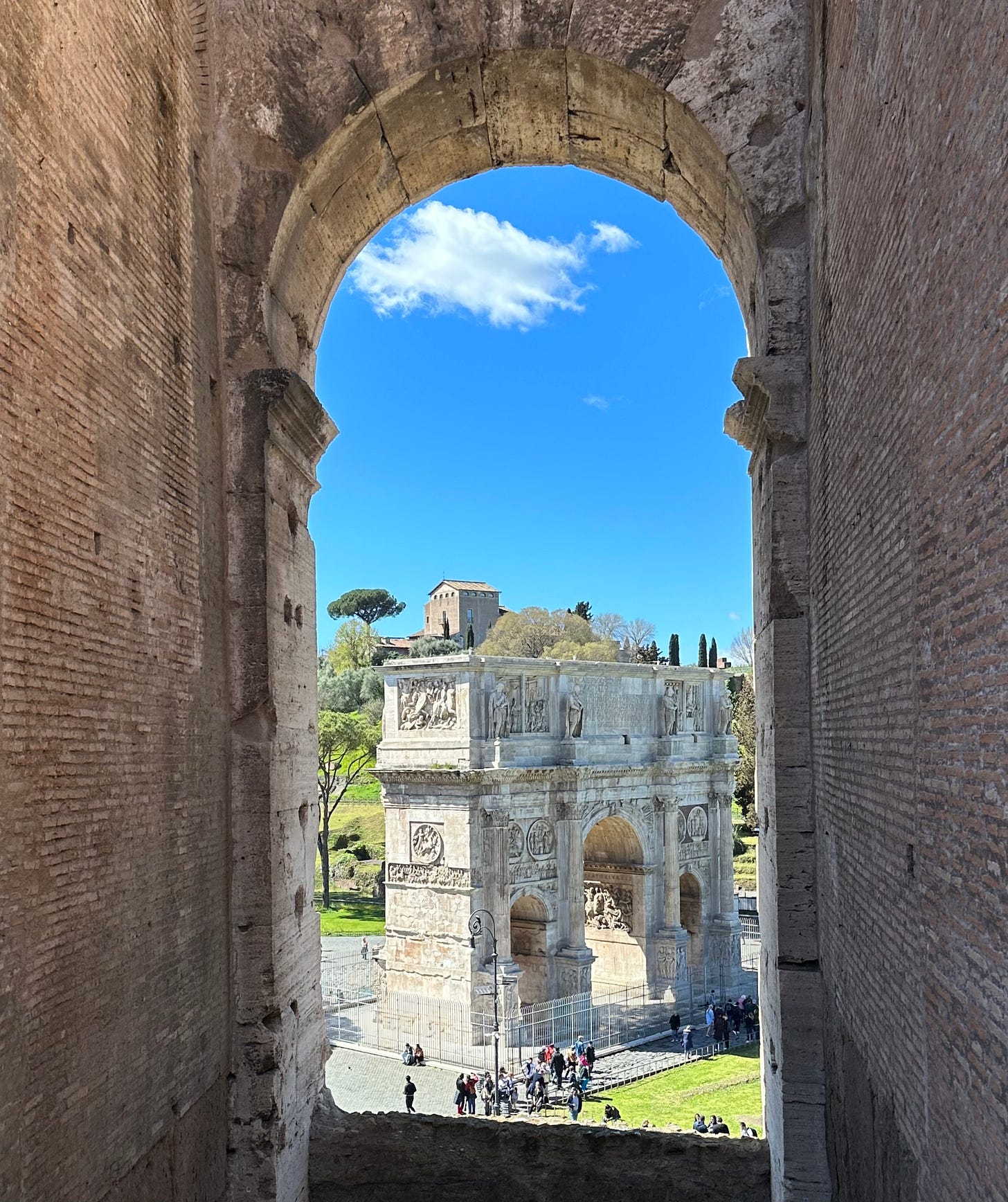

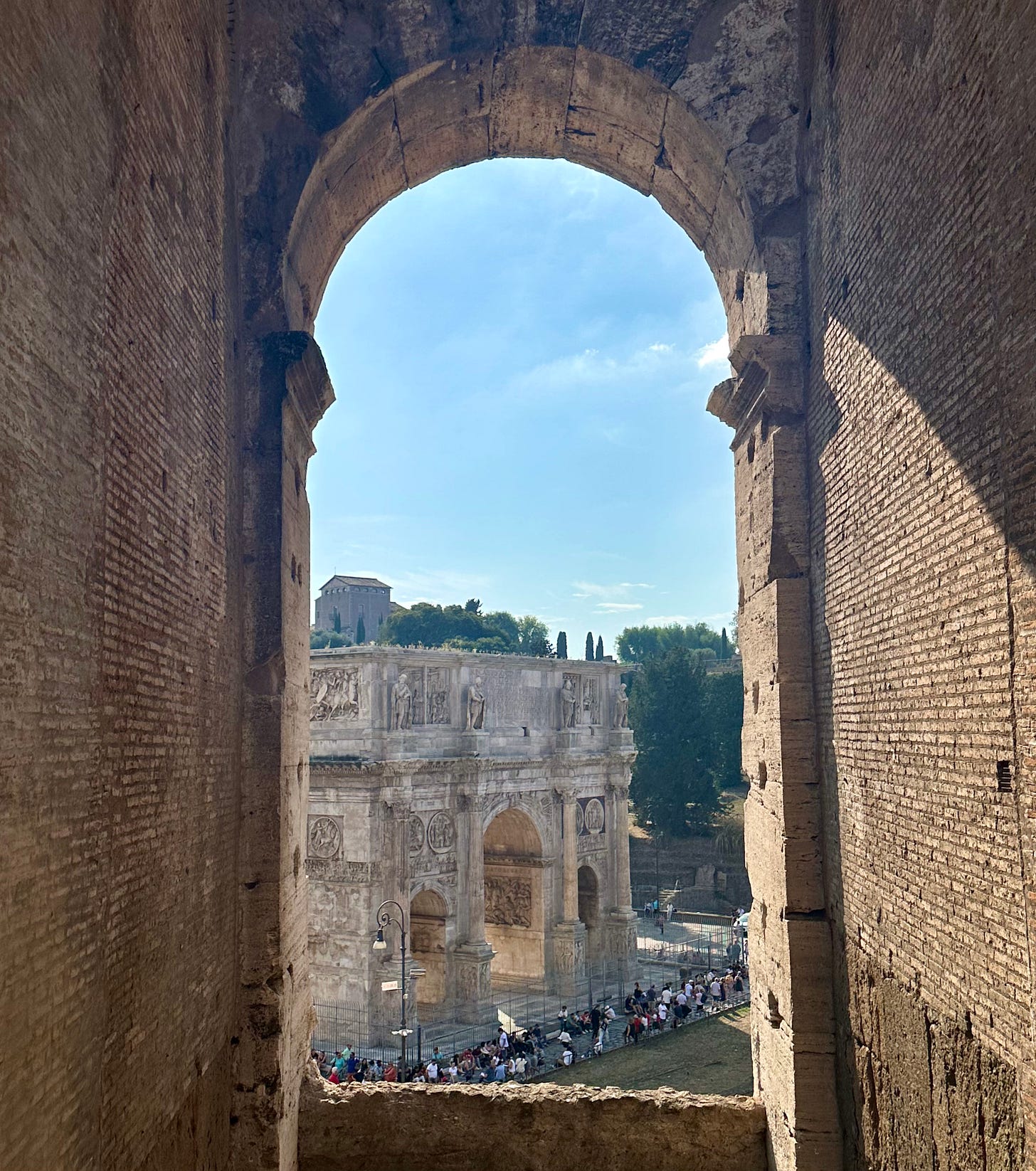
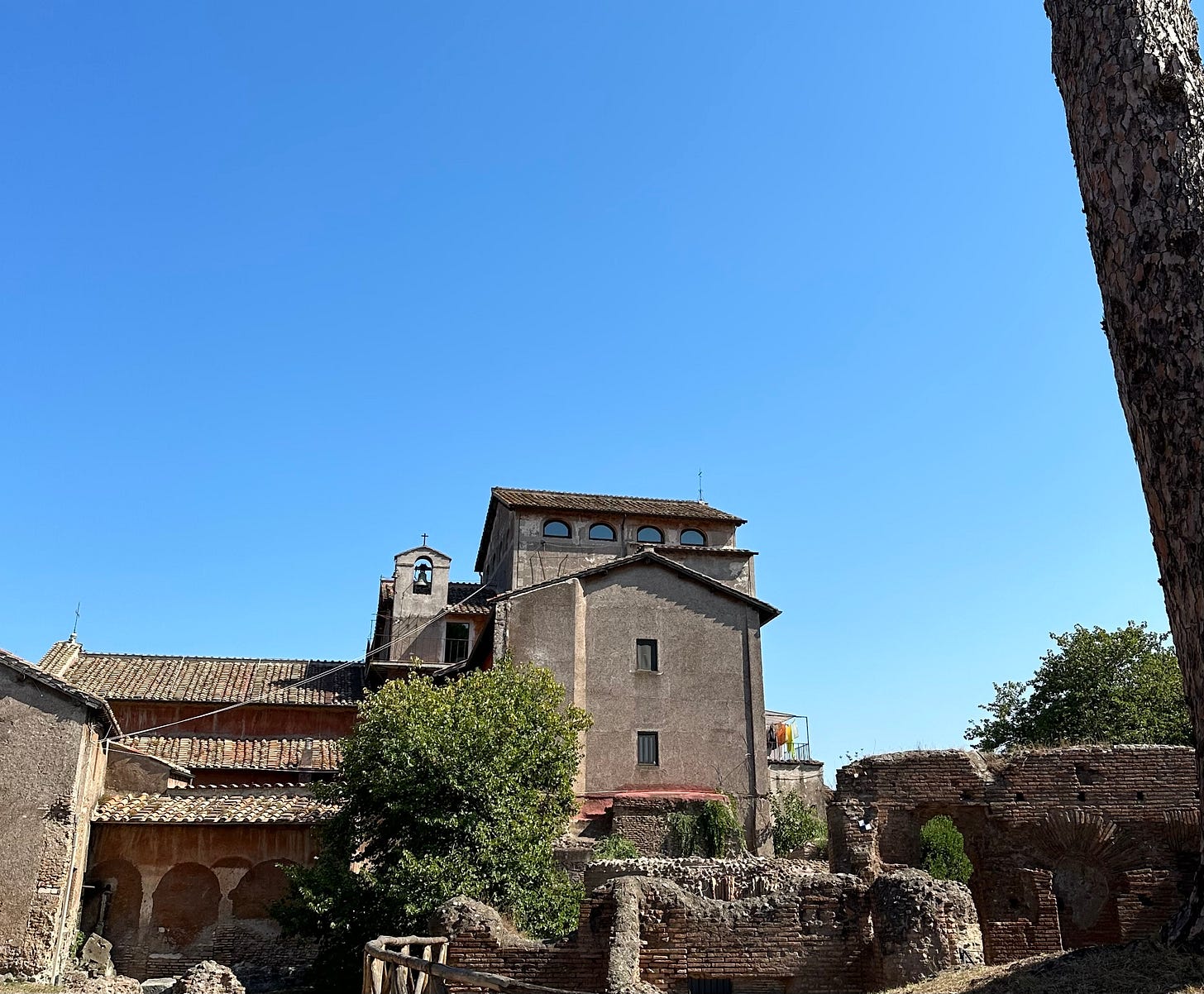
Thank you for that! Some of my favorites too.
As usual, I learn so much from your posts Agnes - I had no idea Constantine only lived there for 8 months! And by the way, I also have a camera roll filled with repeats of the same places/views. One (thousand) is never enough! Current crush is the Sant' Andrea delle Frate spire in every possible light...